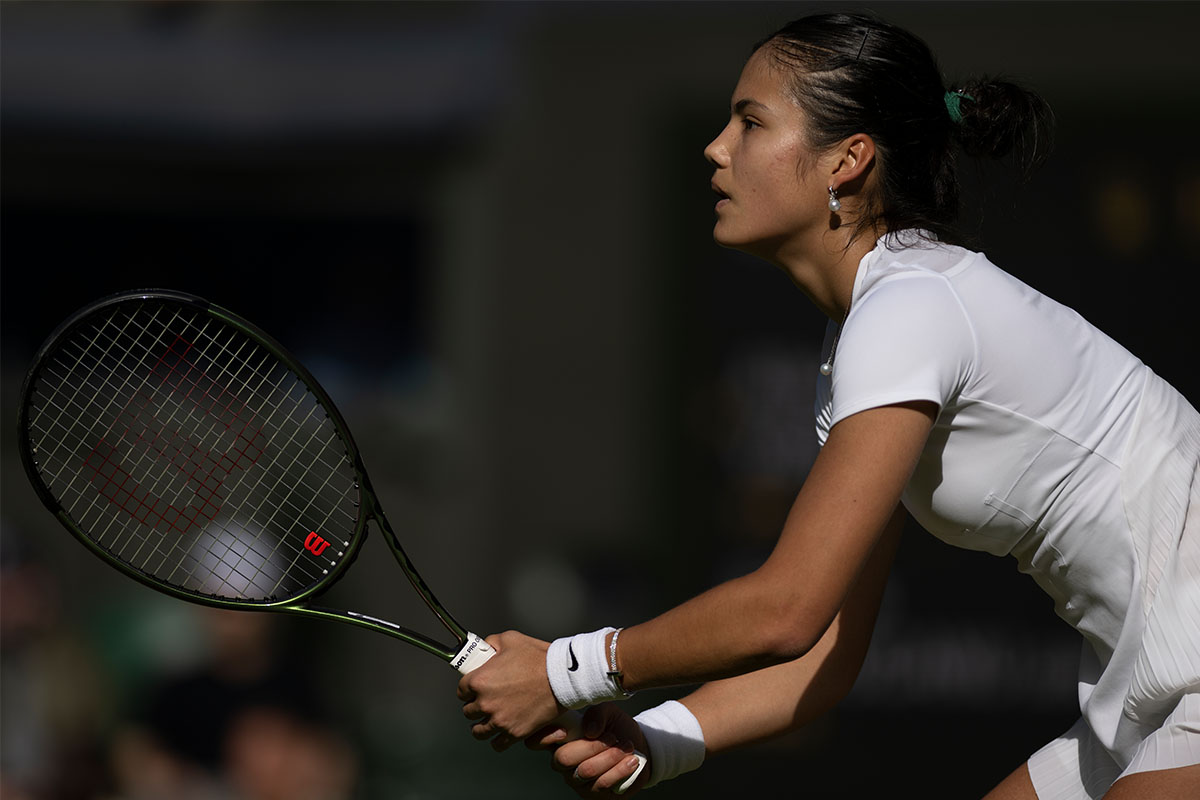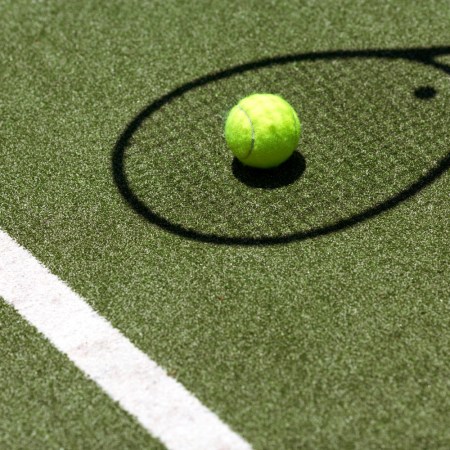Among the Victorian-era’s many bizarre rules on impropriety (showing up to dinner on time was considered gauche, you were never to acknowledge when someone had broken something, all those courtship rituals that Bridgerton has built a franchise on), the rule-makers of the time were especially upset with sweat.
Any sign of perspiration was considered rude or improper, which is fascinating, considering how many heavy layers the ton of the time would wear to promenade. The stance extended even to athletic competition. When Wimbledon officials were drafting their dress code in the 1880s, they favored a wardrobe that they figured would best obscure the stains on players’ torsos. All colors were banned, and athletes were expected to wear only white.
In the near-150 years since the tournament began, Wimbledon’s whites have become as evocative as anything else in professional sports. They represent tradition, summer, strawberries and cream. At his absolute best, Roger Federer was always in white. The whole affair is as elegant as sporting could possibly be — with Rolex ads on the walls and Royals in the seats, how could the players not wear clean, crisp whites?
But here’s the thing. The All England Club’s wardrobe expectations have long had more emotional support amongst the game’s fans, than they’ve had functional support amongst the game’s players. That the dress code is rooted in Victorian-era customs has not been cause for nostalgia for many of tennis’s biggest stars over the decades; actually, it’s further delegitimized a policy that many of them have found strict and unnecessary.
In case you’ve forgotten — the always-colorful Andre Agassi boycotted the tournament from 1988 to 1990 and Federer himself got in trouble with the club for wearing orange-soled shoes back in 2013 (“I think it’s very strict,” he said at the time. “My personal opinion: I think it’s too strict.”) The officials rules are available to read on Wimbledon’s website, and even here in 2022, there’s incredibly little wiggle room: no off-whites, no creams, no colorful accessories or underwear. Players are allowed some colorful piping (the trim on shirts and shorts) at most.
Supporters of the edict often ask frustrated players what the big deal is. Here’s a highly typical internet take, from a commenter named Doug, on a recent article by Yahoo: “Guess what? Many people have jobs where a dress code or a actual uniform is required to work….so what’s the problem?”
Fair enough. But that final question — “What’s the problem?” — could easily be lobbed back at Wimbledon itself. Why enforce such a silly, outdated rule? Why ever risk alienating the players? The Wimbledon brand relies on far more than a dress code, doesn’t it? Surely its pedigree (the elite level of competition) speaks for itself? If the club’s officials disagreed with that take, what sort of vote of confidence is that for their tournament? It seems obvious that our focus should be on what the game’s finest are capable of doing, not what they’re supposed to be wearing.
Meanwhile, recent comments from the women’s field has brought a sense of urgency to this debate, which has otherwise ebbed and flowed for decades (and, quite frankly, seems unlikely to ever tilt away from the dress code). On a recent episode of The Tennis Podcast, commentator Catherine Whitaker talked about the outsized, yet unspoken role that periods play in athletic competition for female athletes. She was reacting to comments from Qiwen Zheng, who lost last month in the French Open and shared with CNN: “I cannot play my tennis, (my) stomach was too painful…I wish I can be a man on court…so that I don’t have to suffer from…my stomach pain. I think I could enjoy more, like to run better and to hit harder.”
Whitaker said: “I was so delighted to see that she said that…I got my period yesterday. I woke up this morning with cramps so bad I thought I’m not going to be able to get out of bed today. My first thought was there are eight female players playing today. Chances are two of them have probably got their periods today. They might feel okay. There’s a good chance they don’t. You don’t have to specifically have debilitating cramps to just not feel yourself. This is a game of the finest margins at the absolute elite level…It should be talked about. It should be completely normal.”
Monica Puig, a former professional tennis player, echoed Whitaker’s comments, and linked the discourse to Wimbledon’s dress code, tweeting: “Definitely something that affects female athletes! Finally bringing it to everyone’s attention! Not to mention the mental stress of having to wear all white at Wimbledon and praying not to have your period during those two weeks.” Meanwhile Heather Watson, another pro, said having to wear white can be “annoying.” She told BBC Sport: “I’ll probably go on the pill just to skip my period for Wimbledon. That’s the thought process and conversations that girls have about it.”
Whitaker concluded: “I cannot imagine going into the biggest day of my life, with my period, and being forced to wear white.” Well: neither, apparently, can any of the men who originally drafted this dress code, or uphold it today. Think about it. It must be harrowing enough facing the game’s biggest stars on its biggest stage, without having to worry about menstrual blood showing through your white-or-else skirt.
Making matters worse — players are only allowed to go to the bathroom twice during a match. But what if a very real, very normal biological concern means you could use another trip? As Yahoo reports: “The lack of acknowledgement means athletes have to invent their own workarounds, like wearing additional pads or using larger-size tampons or birth control strategically.” This is flatly unacceptable. Wimbledon should be in service to its players, not the other way around. That means listening to their concerns and creating an environment in which they feel most comfortable. When athletes are comfortable, they run, cut and serve better. That leads to more equal and exciting games. Who could argue with that?
Wimbledon has a history of “othering” its female athletes. From accusing Gertrude Moran of “bringing vulgarity and sin into tennis,” back in 1949, when her undergarments were trimmed with lace, to shaming Venus Williams for daring to wear a pink bra in 2017 (she rightfully responded with: “I don’t like talking about bras in press conferences. It’s weird.”) the tournament has made it clear that it prioritizes its own iconography above the reasonable requests of its players.
We’ve come a long way since Victorian England, a time when women were discouraged from picking up books and banned from being alone with strangers. We’ve scrapped the era’s ridiculous garments, too. So let’s bring some updates to London’s famous grass courts, too. If the majority of pros still want to wear white, that’s fine. But if you’d feel more comfortable in a purple top — or, god forbid, some colored undergarments — then that should be allowed. It’s the least Wimbledon can do to support its courageous female athletes.
Whether you’re looking to get into shape, or just get out of a funk, The Charge has got you covered. Sign up for our new wellness newsletter today.


















